This post may contain affiliate links. Please read our disclosure policy.
It’s so easy to make silky smooth Slow Cooker Yogurt at home with just two ingredients and prep time of only 5 minutes! This simple recipe saves money, reduces waste, and delivers fresh yogurt without any additives or preservatives.
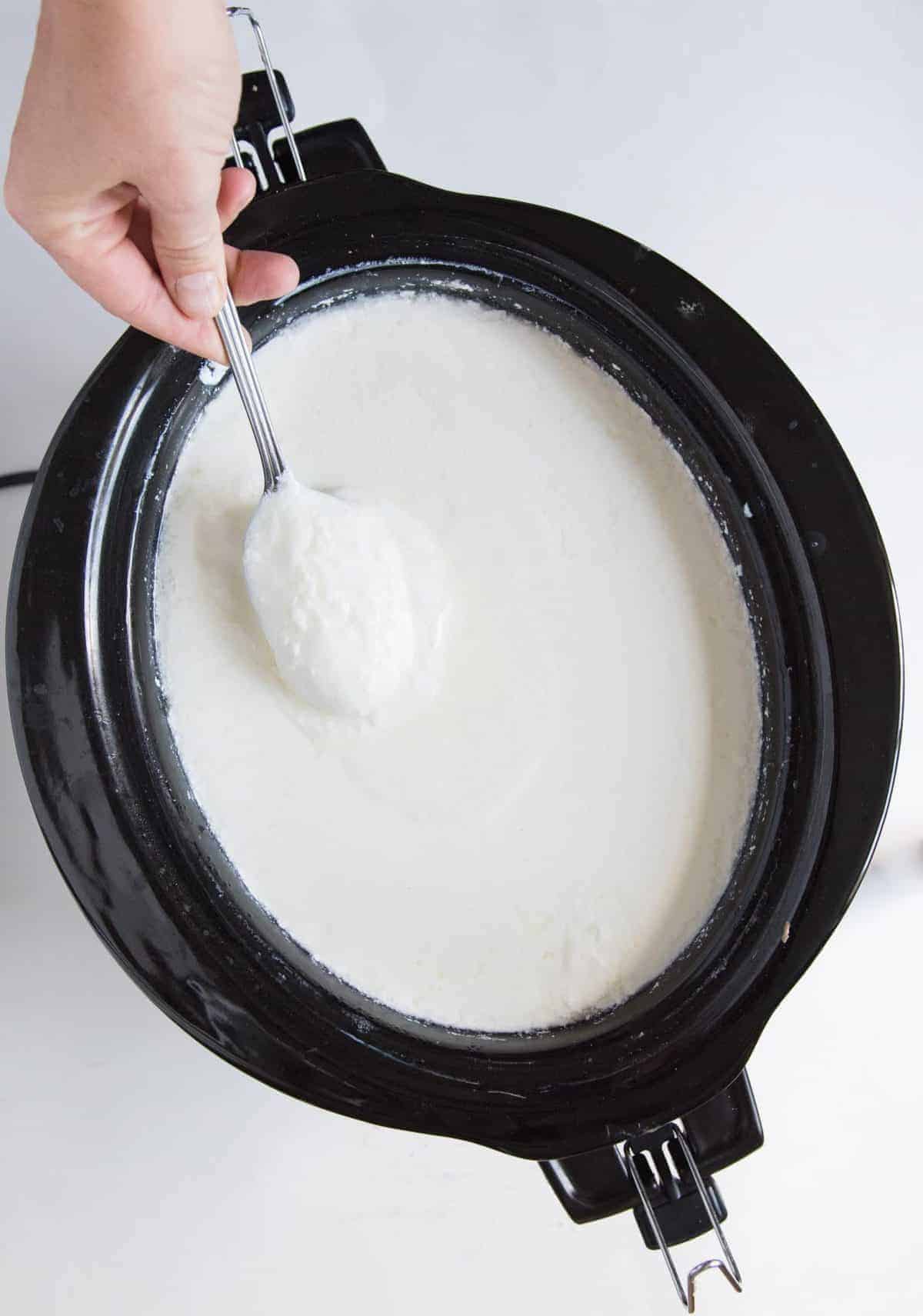
🥛Just 5 minutes of prep, and then slow cooker does the rest while you sleep. Such an easy way to get another option for homemade breakfast or snacks into your meal rotation!
My 2 Best Tips For Making Slow Cooker Yogurt
- Temperature Matters: The first time you make this recipe, use a thermometer to verify your slow cooker’s heating pattern. The ideal temperature for yogurt cultures is 110-115°F (43-46°C). Too hot and you’ll kill the cultures; too cool and they won’t activate properly.
- Quality Starters Make Quality Yogurt: Choose a high-quality plain yogurt with live active cultures for your beginning starter. Brands like Mountain High, Fage, or Chobani work well. Then you can start saving your own starter from each of your homemade batches. After a few batches, you may notice your yogurt becoming less thick—this is the time to introduce a fresh commercial starter.
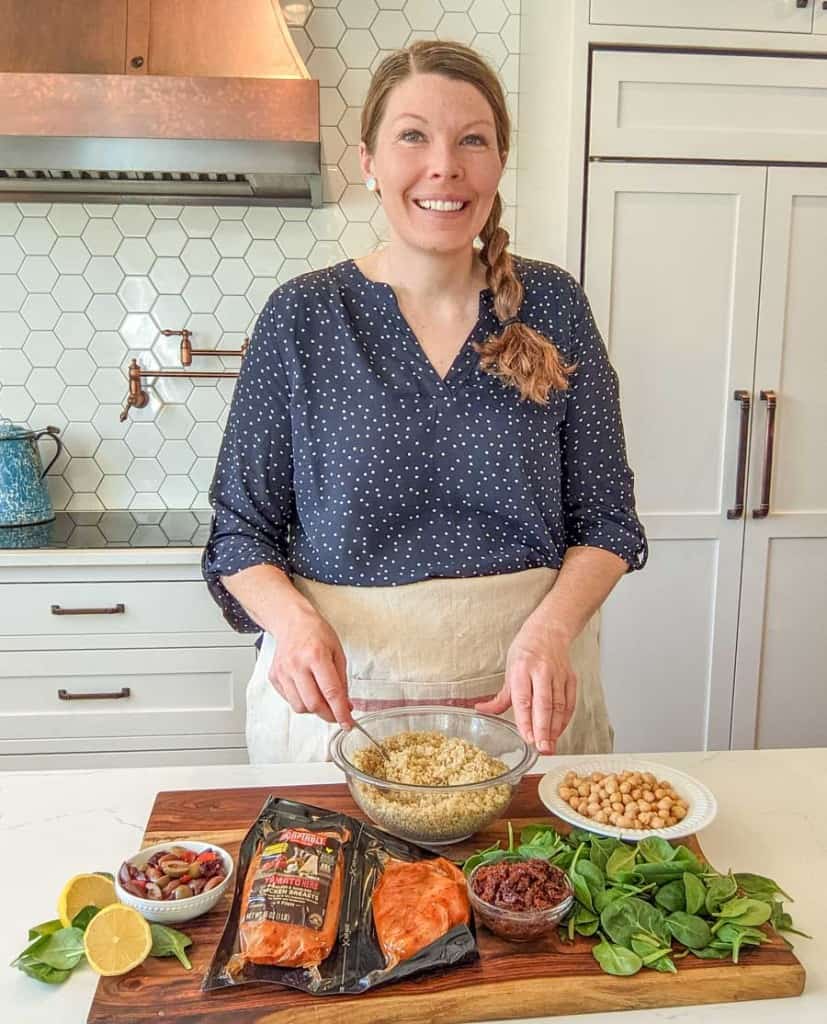
🩷 Melissa
I like to start this in the afternoon so that it’s ready to sit for its long 8-12 hour warm resting period overnight. We then wake up to fresh yogurt, and I’ll serve it with fresh fruit and some homemade granola.
This is a great way to to get organic yogurt on the cheap. You can buy a carton of organic milk and turn it into yogurt for about half the price of organic yogurt.
It is plain yogurt, but you can add honey, jams, fresh fruit, and just about anything else you like. I also use it in place of sour cream in most recipes.
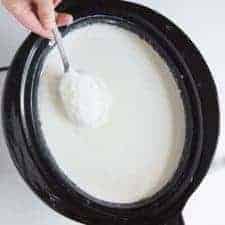
Slow Cooker Yogurt
Ingredients
- 1/2 gallon (8 cups) whole milk (you'll get a thinner product with a lower fat content milk)
- 1/2 cup commercial plain yogurt that says “Live and Active Cultures” on the tub, I have great success with Mountain High yogurt for my culture.
Instructions
- In a large crock pot, add the milk. Add the lid. Turn it on low for around 2 ½ hours.
- After that time has passed, unplug the crock pot and let it sit for 3 hours. I always set a timer for these or I don’t remember.
- After the 3 hours has passed, stir in the ½ cup of yogurt. Replace the lid of the crock pot and cover with two big towels or a blanket. Let rest for 8 to 12 hours (overnight works well). In the morning you'll have yogurt!

- Place it in a half-gallon mason jar and refrigerate for a few hours before serving. It will thicken up in the fridge. Keep a ½ cup of this yogurt for your next batch and say goodbye to buying yogurt!
- You can also let the yogurt strain in cheese cloth in the fridge for a few hours and you'll get a thicker Greek yogurt.

Video
Notes
- I highly recommend getting a little instant-read thermometer to make homemade yogurt since it’s all about the temperature.
- The goal is to scald the milk which takes place around 180°F. Check it with a thermometer the first time to see if the “warm” setting is warm enough or if maybe an hour and 45 minutes would work on low. Once you figure it out, I don’t think you would have to use the thermometer every time.
- After the milk is scalded, the waiting time is meant to bring the milk down to around 110-115°F so it’s still warm but won’t kill your yogurt culture.
- Serve with fresh fruit and granola
- Make yogurt bowls: 5 Easy Healthy Yogurt Bowl Ideas
- Homemade Fruit on the Bottom Yogurt Cups
- 4 Ingredient Healthy Strawberry Frozen Yogurt (5 minute recipe!)
- It also goes great in smoothies like my Key Lime Pie Smoothie, Strawberry Kiwi Smoothie, or Avocado Smoothie.
- Or try it in these amazing Soft and Puffy Greek Yogurt Sugar Cookies!
Nutrition
Recipe FAQs
Homemade yogurt typically stays fresh in the refrigerator for 1-2 weeks when stored in an airtight container. The flavor may become more tart over time as the cultures continue to slowly develop.
Several factors can affect thickness: using ultra-pasteurized milk, milk with lower fat content, culture that wasn’t active enough, or temperature issues during incubation. For thicker yogurt, try using whole milk, ensuring proper temperatures are maintained, or strain the finished yogurt through cheesecloth.
After your yogurt is made, simply line a fine-mesh strainer with cheesecloth, place it over a bowl, and pour in your finished yogurt. Allow it to drain in the refrigerator for 2-4 hours for a thicker Greek-style yogurt. The longer it strains, the thicker it becomes.
More Healthy Snack Recipes to Consider
Dip Recipes
Lemon Garlic Hummus Recipe Without Tahini
Healthy Snacks
Medjool Date Protein Bites: No-Bake Sweet Treat
Healthy Snacks
Chocolate Peanut Butter Protein Balls
Did you make this recipe? Leave a ⭐️ review and share it on Instagram, Facebook, or Pinterest!

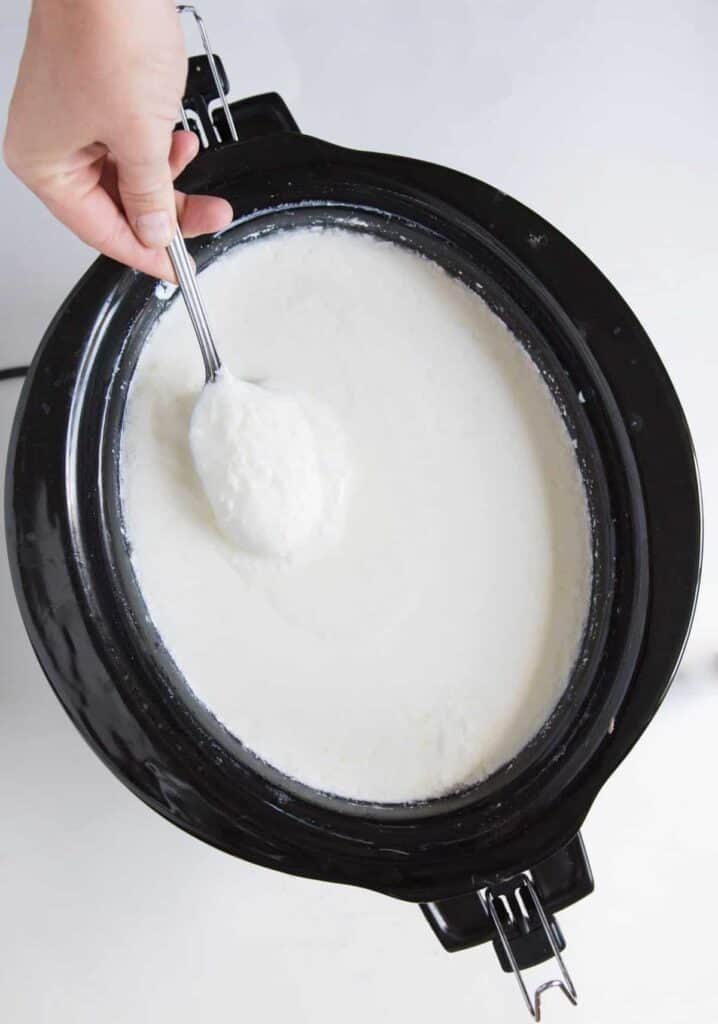
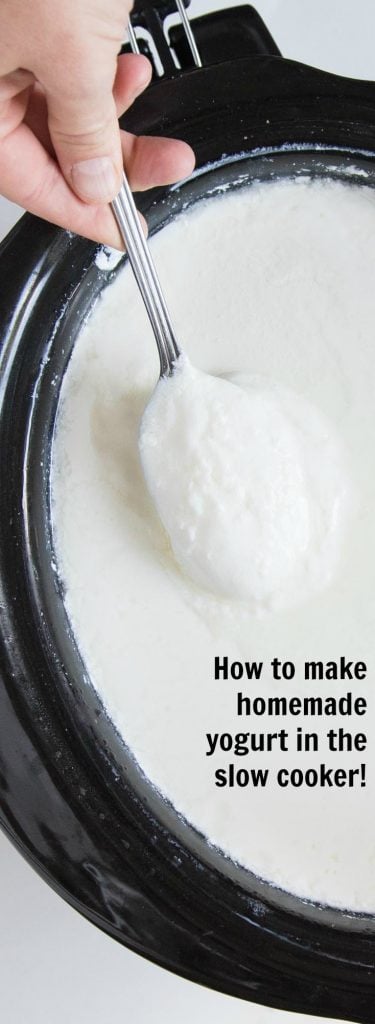
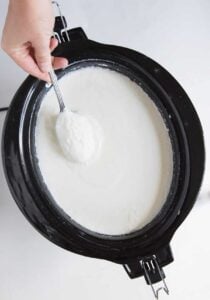
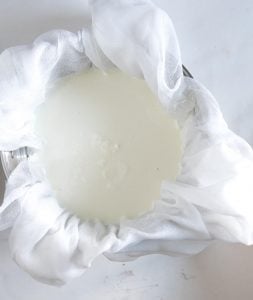
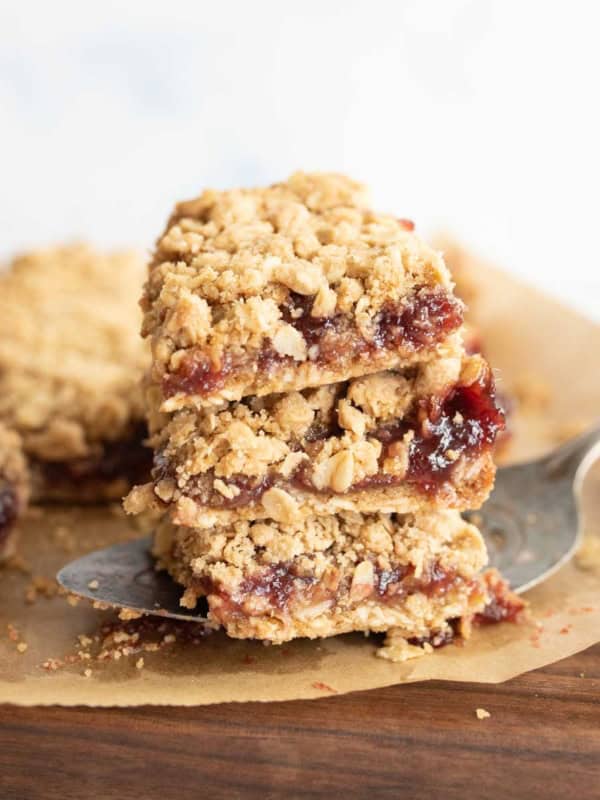
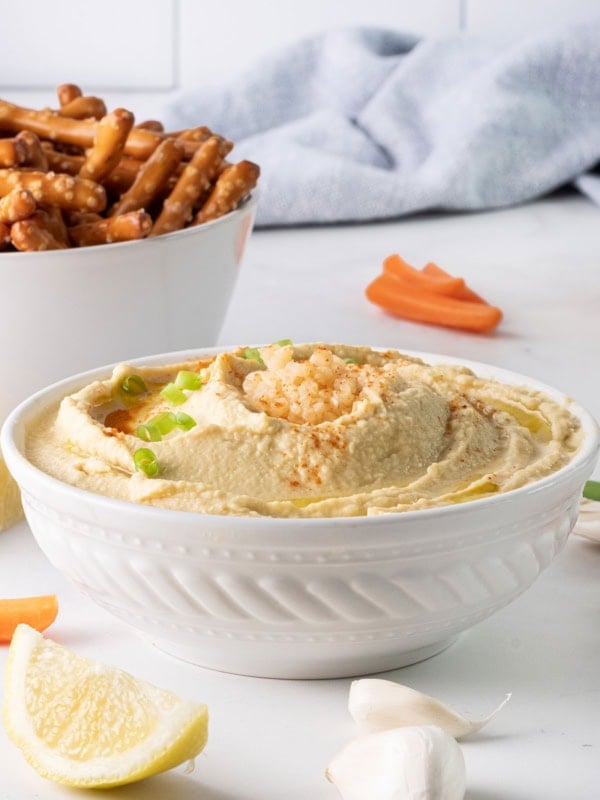
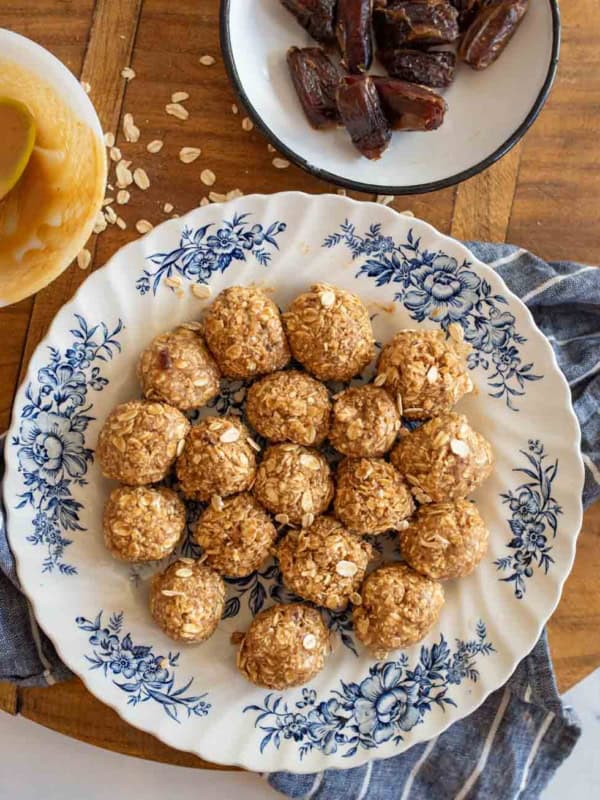
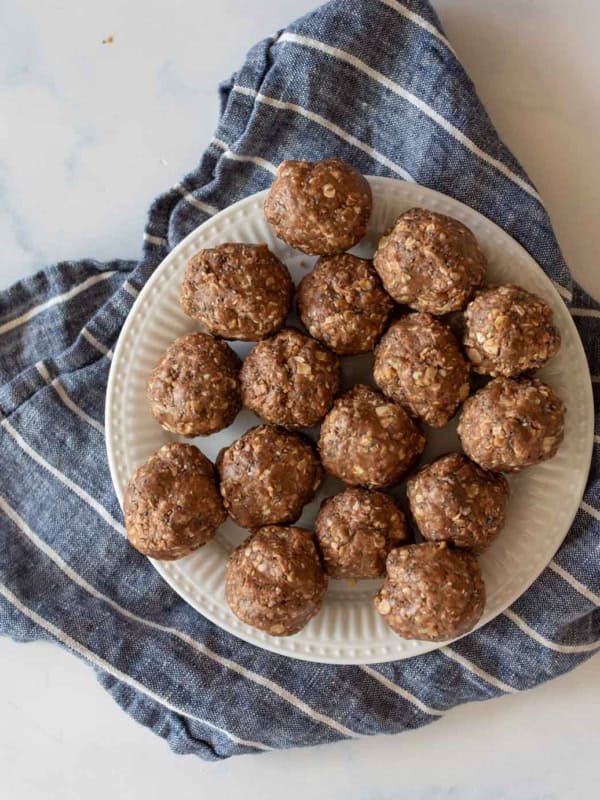






what size crock pot is used for this recipe’s measurements?
I used a 6 quart for mine.
I would like to make this a slightly sweetened vanilla yogurt. When would I add the sweetener and vanilla flavor to the recipe?
There’s different schools of thought on this and you can do some additional research, that being said I typically add it after it has set but before I put it in the fridge. So I’ll gently mix in my sweetener (I use honey) and some vanilla, not being too aggressive, then I’ll chill it.
Thank you for the recipe! I had an interesting experience. I halfed the recipe, using whole raw milk and Noosa plain whole milk yogurt. Followed all the steps but woke up to just slightly thicker milk. Ouch! After frantically searching the internet for how to salvage what i thought was a failure, some tips from https://saladinajar.com/yogurt/what-can-i-do-with-failed-homemade-yogurt/ helped. Then I remembered a neighbor from the middle east, ages ago, who had a towel covered bowl of yogurt (in progress) sitting on her kitchen counter. I thought I’d give it a try. Set mine covered on the counter by the warm stove. The kitchen cooled off a little but it sat overnight and we woke up to delicious, thick, creamy yogurt! I’m so happy! I will use your recipe the next time I make a batch!
Sherri, thanks for sharing your experience! Raw milk will act a little differently than pasteurized milk and needs to be heated before use, there’s something about the protein structure and just using raw milk will result in a thin yogurt but you did the right thing and fixed it! Great job. You essentially just pasteurized it the first time!
Thank you ,iam going to make it ,My daughter in Texas forward the receipt to me .it sounds great 👍 gloria🤗💖👍
Tell your daughter thanks for me Gloria, I always appreciate when someone shares a recipe!
Thank you for sharing this recipe. This was so easy and came out so good! I strained it over night with cheesecloth and it was a nice thick Greek style yogurt. I will definitely be making yogurt at home instead of buying it at the grocery store.
Thank you.
This is the first post I found that tells you what temperature the milk is supposed to be at each stage. Turn out first try.
I made this recipe after failing to produce yogurt with the stove top method. Followed all of the steps and checked the crock pot in the morning and had perfectly creamy yogurt! I used Stonyfield Organic probiotic plain whole milk yogurt. I highly recommend this recipe, it’s foolproof!
It worked really well. Only difficult part was figuring out how hot our crockpot got. Once we figured it out everything else was easy. This homemade yogurt is delicious! Nice thickness and smooth without the sour taste.
Once it’s in the fridge complete, how long can it be kept for?
Just want to make sure I use the saved portion before it goes off.
Can the saved portion be frozen for the next batch??
It last as long as most other yogurt, a week or so. And yes, freezing some for other batches works great!